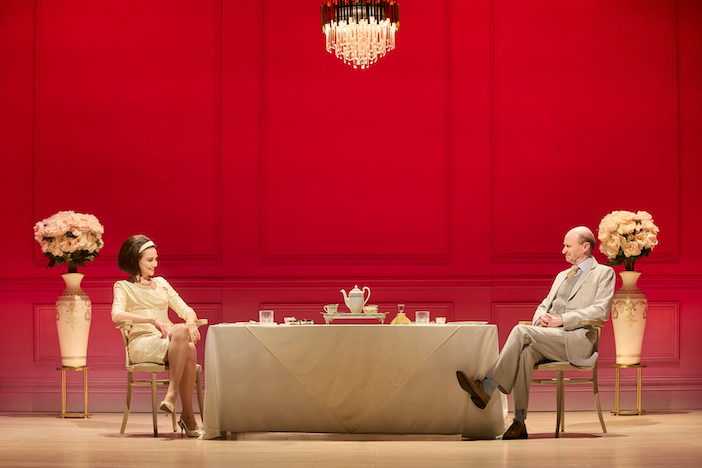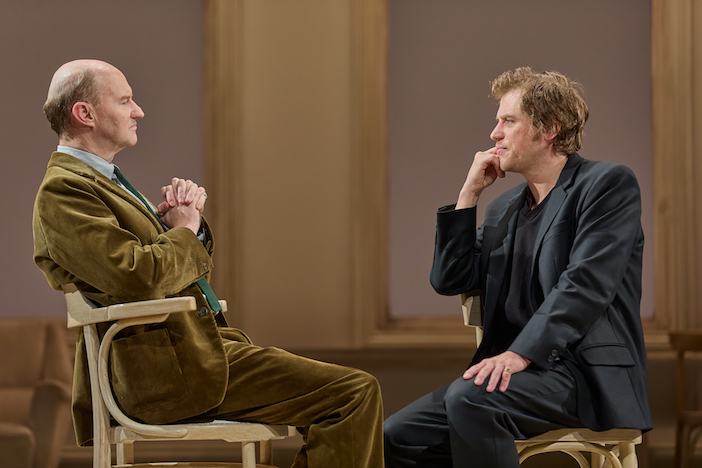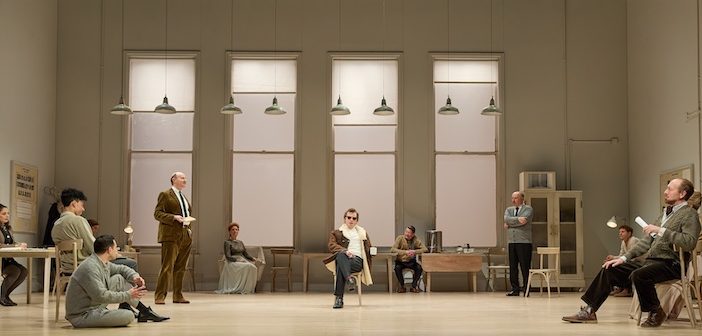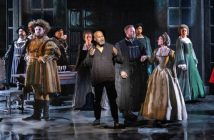Put an exacting, classical theatre impresario in a room with an irascible firebrand film star, give them the world’s greatest artistic work, and what do you get?
Two doses of theatrical dynamite, clearly.
The first, in 1964, when Sir John Gielgud directed Richard Burton in the now legendary Hamlet on Broadway, and, more recently, in the story of how that production came about, penned by Jack Thorne and delivered at the hands of someone who can also tell a story or two, Sam Mendes.

Much like watching the behind-the-scenes on a favourite film, there’s a certain voyeuristic appeal to these backstage insights into great works and the infamy of the stories that they produce; little wonder they make for appealing theatrical fodder – a recent memorable turn is The Shark is Broken, still doing the rounds.
Based on the memoires of Richard L Sterne, one of the cast members of the Gielgud-Burton production, Thorne’s play opens the door on the rehearsal rooms from the initial read-through to the opening night. It’s not based on mere memory, dramatisation or conjecture either; Sterne surreptitiously taped-recorded those rehearsals, including a closed session with both director and star, giving us a very revealing insight into the minds and working methods of the two men – and, to its core, the clashes between them leading to the notoriety of this story.

Tuppence Middleton as Elizabeth Taylor and Mark Gatiss as John Gielgud
As Elizabeth Taylor (Tuppence Middleton) puts it to Gielgud, during her deus ex machina intervention at the beginning of the second act, “You are a classicist who wants to be modern; he is a modernist who wants to be classical.” It’s easy to see how they wound each other up; each tackling the text in their own way, each has their method, and their interpretation, with Burton’s lengthy mid-sentence pauses and exaggerated cadences, to Gielgud’s more delicate, traditional stance.
Beyond the rehearsals, Thorne’s script adds context with insights into the Taylor-Burton marriage(s) – itself something of a tantalising succour to those wishing to imagine the intrigue of their relationship – and even glimpses into Gielgud’s personal life, all cleverly weaving excerpts from the Shakespeare text in and out of the action and scene changes, masterfully staged, as you might expect from Mendes and Thorne.

Mark Gatiss as John Gielgud and Johnny Flynn as Richard Burton
Equally, as Gielgud and Burton, Gatiss and Johnny Flynn steal the show, both embodying their parts without falling into pastiche or corny impressions. And it’s the dynamic and tension between the two leads that keeps you captivated, never more so than when it boils over. “You shout wonderfully…I’m a violin”, Gielgud’s delicate quips would be considered passive aggressive now, versus Burton’s outward irritation; “Don’t line read me,” he keeps barking.
In the end, both of them are right, for who’s to say, really, how Hamlet should be performed. Taylor’s intervention, as suggested in the play, brokers a peace. They find their medium, and a new approach for the prince – even to Gielgud and his 500-plus performances – providing the motive and the cue.
The result? In a goosebump-inducing coda, we’re told the production would run for 17 weeks, breaking box offices records in the process, cementing Burton’s reputation as one of the greats and reviving Gielgud’s career, and showing why Hamlet is as relevant, challenging and life-affirming now, as it ever has been.
The Motive and the Cue runs until 23rd March 2024 at the Noel Coward theatre. For more information, and for tickets, please visit www.nationaltheatre.org.uk.




